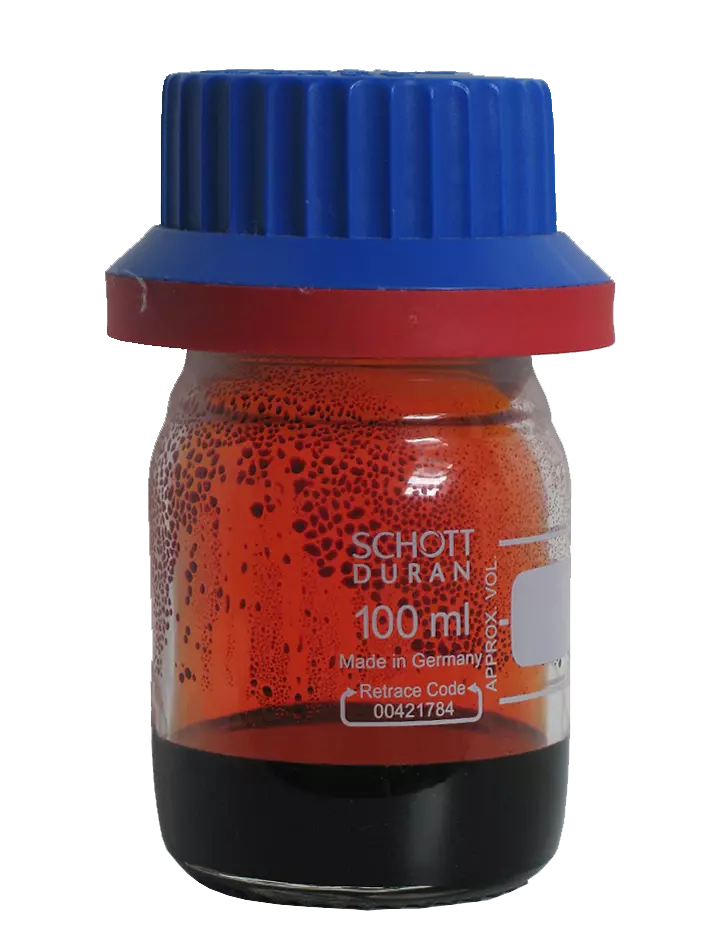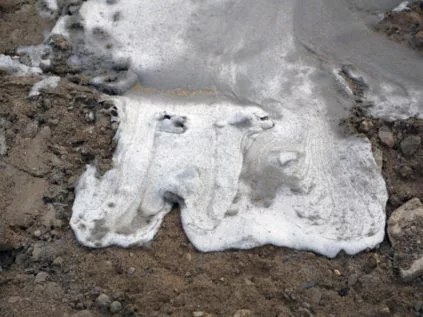What is Bromine?
Bromine is a naturally occurring halogen element with the atomic symbol ‘Br’. It is one of only two elements on the periodic table known to be liquids (the other being mercury) and it is the only non-metal element to exist in liquid form at room temperature and pressure. Bromine is found in the earth’s crust and sea water.
Bromine is heavy, mobile, reddish-brown and evaporates easily into a red suffocating vapour that has a strong pungent smell. It is toxic and very corrosive to human skin and metals, with properties between those of Chlorine and Iodine. Bromine reacts rapidly with many elements and has a bleaching action, causing painful sores if spilled on the skin. Due to these risks, effective safety measures should be taken when handling it.
In the event of a Bromine spill or accident, it is strongly recommended to hire a professional chemical cleanup services like Ideal Response immediately. We are just a call away!

Some Interesting Facts About Bromine
Apart from the chemical properties mentioned above, Bromine poses some interesting facts including:
- Bromine is the Earth’s 44th most common element
- The name Bromine derives from Greek word ‘Bromos’ for stench
- Discovered in 1826 by German scientists Antoine Jérôme Balard and Carl Jacob Löwig
- Historically Bromine was used as a sedative
- Bromine exists as a diatomic molecule, Br2
- Free bromine does not occur in nature, but occurs as colourless soluble crystalline mineral halide salts
What are the Key Properties of Bromine?
Bromine has many properties including:
| Bromine Properties | Value |
|---|---|
| Atomic number | 35 |
| Molecular formula | Br2 |
| Atomic mass | 79.904 g/mol |
| Density | 3.1 g.cm-3 at 20°C |
| Melting point | – 7.2 °C |
| Boiling point | 58.8 °C |
| Vanderwaals radius | 0.165 nm |
| Ionic radius | 0.195 nm (-1) |
| Isotopes | 10 |
| Electronic shell | [ Ar ] 3d10 4s2 4p5 |
| Energy of first ionisation | 1142.7 kJ.mol -1 |
| Standard potential | 1.08 V |
What is Bromine Used for?
Bromine is used in various sectors including agricultural, manufacturing and medical spaces. Listed below are some of the most common examples of where bromine can used are:
- Seawater
- Pesticides
- Plastics
- Dyes
- Flame retardants
- Fumigants
- Flameproofing agents
- Water purification compounds
- Medicines
- Sanitisers
Apart from the above applications, Bromine is also used across various sectors including the following:
- Swimming Pools / Water Treatments: Used as an alternative to Chlorine, Bromine is an alternative substance used for various disinfectants to prevent algae and microorganisms in swimming pools.
- Pharmaceuticals: Bromine is contained in various over-the-counter prescription drugs to treat a multitude of health issues. Bromide ions have the ability to decrease the sensitivity of the central nervous system which makes them effective for use as sedatives, anti-epileptics and tranquilisers.
- Photography: The most well-known use of bromine is in making photographic films. Silver Bromide is light-sensitive and is used to manufacture photography plates. Its microscopic particles when exposed to light, undergo a change as a result of chemical reaction.
What is Bromine Poisoning and How to Treat It?
Bromine poisoning occurs when an individual is exposed to high levels of bromine. Though it is rare, Bromine poisoning can have serious health risks.
How Bromine Poisoning Occurs?
- Inhalation: Bromine release toxic vapours when it reacts with water or air. Inhaling these vapours can cause severe respiratory problems and other risks.
- Skin Contact: Physical contact with Bromine can cause skin irritation, burns and blistering.
- Ingestion: Accidental ingestion of bromine occurs when an individual drinks water contaminated with bromine or eats bromine-containing products.
Treatment of Bromine Poisoning:
- Step away from the source: If you are exposed to Bromine, move to a well-ventilated area away from the source. Avoid any further contact with the substance. Take off any contaminated clothing and place it in a double wrapped plastic bag. Avoid touching with your hands, instead use tongs or similar objects to handle the clothes. Dispose of any other items that have come into contact with Bromine.
- Decontaminate the skin: Wash the affected skin with soap and water to remove any bromine residue. Administer first aid and treat any skin burns or blisters with ointments, creams, or dressings.
- Seek medical attention: Immediately seek medical attention if the affected person experiences severe symptoms, such as difficulty breathing, cardiac problems, or neurological symptoms.
- Antidotes: Though there is no specific antidote for bromine poisoning, medications such as bronchodilators and antacids can help manage symptoms like respiratory problems and gastrointestinal issues.
Time is of the essence when someone has been exposed to Bromine, as it can be sometimes severe and potentially life-threatening. Seek immediate medical attention or call emergency services like Ideal Response before the situation goes out of control. Ideal Response is just a call away!
Bromine Safe Disposal and Recycling
As Bromine is highly reactive and toxic, its disposal and recycling require careful handling to ensure safety and environmental protection. Here are some safe disposal and recycling methods for bromine:
- Neutralisation: Bromine neutralization is done by using reducing agents, such as Sodium Bisulphite or Sodium Thiosulphate. These reducing agents convert Bromine into harmless Bromide ions, which can be safely disposed of in wastewater treatment facilities.
- Adsorption: Adsorbent materials like activated carbon can be used to adsorb and remove Bromine from gaseous or liquid streams.
- Incineration: Bromine can be incinerated in specialised facilities like Ideal Response that are equipped with scrubbers and emission control systems to capture and treat the resulting gases and particulates. This method should only be performed by trained professionals.
Bromine Recycling Methods:
- Chemical Recycling: Bromine can be recycled and recovered through chemical processes such as electrolysis or oxidation. This recycled bromine can then be reused in industrial processes.
- Closed-Loop Systems: In some industrial processes, bromine can be used in closed-loop systems where it is continuously recovered, purified and reused. This reduces the need for disposal and minimizes the environmental impact.
- Solvent Recovery: Brominated solvents, such as Methylene Chloride or Perchloroethylene, can be recovered through distillation or other separation techniques. These solvents can then be recycled and reused, reducing the demand for new bromine-based chemicals.
| Bromine Properties | Value |
|---|---|
| Atomic number | 35 |
| Atomic mass | 79.904 g.mol -1 |
| Density | 3.1 g.cm-3 at 20°C |
| Melting point | – 7.2 °C |
| Boiling point | 58.8 °C |
| Vanderwaals radius | 0.165 nm |
| Ionic radius | 0.195 nm (-1) |
| Isotopes | 10 |
| Electronic shell | [ Ar ] 3d10 4s2 4p5 |
| Energy of first ionisation | 1142.7 kJ.mol -1 |
| Standard potential | 1.08 V |
You must note that Bromine disposal and recycling methods vary with the form of bromine, its concentration and the presence of other substances. It is recommended to consult with chemical waste management experts and follow relevant waste management guidelines to ensure safe and proper disposal or recycling of bromine. Ideal Response have successfully dealt with a range of small and large-scale bromine spill cleaning projects throughout the UK. Contact us today and speak to one of our in-house chemical experts and receive a free estimate. You can reach us via telephone call, webform submission or our live chat feature.



